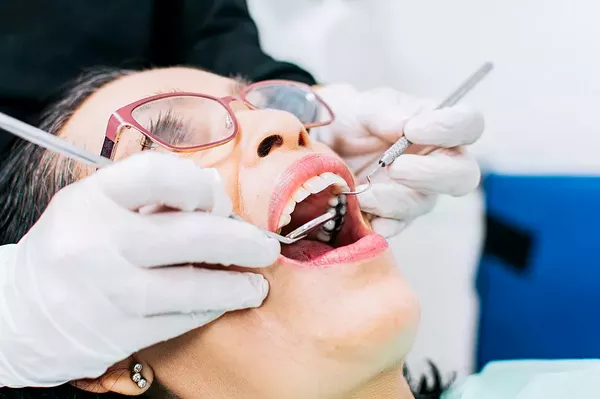Periodontal disease, also known as gum disease, is a prevalent oral health issue that affects millions of individuals worldwide. This condition can have serious consequences if left untreated, including tooth loss and even systemic health problems. Recognizing the early signs and symptoms of periodontal disease is crucial for timely intervention and effective management. In this article, we will delve into the various stages of periodontal disease, its causes, and most importantly, how to identify if you have periodontal disease.
Understanding Periodontal Disease
Periodontal disease is a bacterial infection that affects the structures surrounding and supporting the teeth, including the gums, ligaments, and bone. It typically progresses through different stages, each with varying degrees of severity:
Gingivitis: This is the earliest stage of periodontal disease and is characterized by red, swollen gums that bleed easily, especially during brushing or flossing. At this stage, the infection is confined to the gums and can often be reversed with proper oral hygiene.
Early Periodontitis: If gingivitis is left untreated, it can progress to early periodontitis. In this stage, the infection starts to affect the underlying bone and connective tissues that hold the teeth in place. Gums may recede, forming pockets between the teeth and gums.
Moderate Periodontitis: As the disease advances, the pockets between the teeth and gums become deeper, providing a conducive environment for further bacterial growth. The bone continues to deteriorate, increasing the risk of tooth mobility and potential tooth loss.
Advanced Periodontitis: In this advanced stage, the damage to the bone and supporting structures is severe. Teeth may become noticeably loose, and in some cases, they may even fall out or require extraction due to the compromised support.
Common Signs and Symptoms
Recognizing the signs and symptoms of periodontal disease can empower individuals to seek professional help early, preventing the condition from progressing. Here are the common indicators to watch out for:
Bleeding Gums: One of the earliest and most noticeable signs of gum disease is bleeding gums, especially during brushing, flossing, or eating hard foods. Healthy gums should not bleed during routine activities.
Persistent Bad Breath: If you consistently experience bad breath that doesn’t improve with regular oral hygiene practices, it could be a sign of underlying gum infection. The bacteria responsible for gum disease can produce foul-smelling compounds.
Swollen, Red Gums: Healthy gums are pink and firm. If your gums appear red, swollen, or puffy, it may indicate inflammation caused by infection.
Receding Gums: As periodontal disease progresses, the gums may start to recede, making the teeth appear longer. This can also lead to increased sensitivity to hot and cold temperatures.
Pain or Discomfort: Discomfort, pain, or tenderness in the gums while chewing or touching them could be indicative of gum disease. This discomfort may range from mild to severe.
Formation of Pockets: If you notice the formation of pockets or gaps between your teeth and gums, it suggests that the disease is advancing, and the supporting structures are being affected.
Changes in Tooth Alignment: Shifting or misalignment of teeth without any apparent cause might be linked to the weakening of the underlying bone due to gum disease.
Loose or Moving Teeth: In advanced stages of periodontal disease, teeth can become loose and even shift in position. This is a serious sign that requires immediate attention.
Risk Factors and Prevention
Certain factors increase the risk of developing periodontal disease. These include poor oral hygiene, smoking, diabetes, certain medications, hormonal changes (such as during pregnancy), genetics, and a weakened immune system. While some risk factors are beyond your control, adopting a proactive approach to oral health can significantly reduce your risk:
Brush and Floss Regularly: Brushing your teeth twice a day and flossing daily help remove plaque and food particles that contribute to gum disease.
Regular Dental Check-ups: Schedule regular dental visits for professional cleanings and thorough examinations. Early detection is key to preventing gum disease.
Healthy Lifestyle: Avoid smoking or using tobacco products, as they are major contributors to gum disease. Maintain a balanced diet rich in vitamins and minerals that support oral health.
Manage Medical Conditions: If you have diabetes or any other medical condition, work with your healthcare provider to keep it well-managed. Uncontrolled diabetes can worsen gum disease.
Stay Hydrated: Drinking plenty of water helps rinse away bacteria and food particles from your mouth.
Stress Management: High stress levels can weaken your immune system, making you more susceptible to infections. Incorporate stress-relief techniques into your routine.
Conclusion
Periodontal disease is a serious oral health issue that can have far-reaching effects if left untreated. Recognizing the signs and symptoms of this condition is essential for seeking timely professional care. By maintaining good oral hygiene practices, attending regular dental check-ups, and addressing risk factors, you can significantly reduce the likelihood of developing gum disease. Remember, your oral health plays a vital role in your overall well-being, so prioritize it for a healthier and happier life.
Related Topics:




























